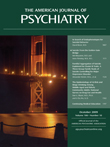A Developmental Twin Study of Church Attendance and Alcohol and Nicotine Consumption: A Model for Analyzing the Changing Impact of Genes and Environment
Abstract
Objective: Church attendance is one of the most consistent predictors of alcohol and nicotine consumption. The authors sought to clarify changes in the role of genetic and environmental factors in influencing church attendance and the interrelationship between church attendance and alcohol and nicotine use from early adolescence into adulthood. Method: The authors used data from two interview waves 6 years apart of 1,796 male twins from a population-based register, in which respondents were asked about current and past church attendance and psychoactive drug use. Structural twin models were fitted and tested using the Mx software program. Results: As twins developed from childhood through adulthood, the influence of shared environmental factors on church attendance declined dramatically while genetic factors increased. In early and late adolescence, the negative correlations between church attendance and alcohol and nicotine consumption resulted largely from shared environmental factors. In adulthood, the inverse relationship between church attendance and substance use became stronger and arose largely from genetic factors. Conclusions: As individuals mature, they increasingly shape their own social environment in large part as a result of their genetically influenced temperament. When individuals are younger and living at home, frequent church attendance reflects a range of familial and social-environmental influences that reduce levels of substance use. In adulthood, by contrast, high levels of church attendance largely index genetically influenced temperamental factors that are protective against substance use. Using genetically informative designs such as twin studies, it is possible to show that the causes of the relationship between social risk factors and substance use can change dramatically over development.



